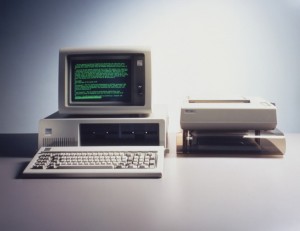With the holidays fast approaching, tech companies are readying new products to woo people looking for the latest hot item in the tech industry. Games consoles, flat screens, and smartphones have had their time in the sun as popular holiday purchases, but this year belongs to the tablet.
Apple dominated the tablet market last holiday season with the introduction of their revolutionary iPad, a wild success with consumers. Since then competitors have tried to emulate the magic of the iPad in an effort to cash in on the new tablet market, but to little avail: HP’s tablet failed to impress consumers, while Motorola’s Xoom tablet has struggled to establish a solid consumer base since its release in January.
But Apple now has two serious contenders to face in the tablet arena: Amazon’s Kindle Fire and Barnes & Noble’s Nook Tablet. Amazon and Barnes & Noble, are both wildly successful companies in their own right, are looking to transform the popularity of their digital reading devices into sleek, user-friendly tablets. Now that there are at least three viable tablets to choose from, it’s time to determine which would be the best buy for the holiday season.
Price
We can separate the tablets from each other right from the beginning by looking at their price ranges. The Apple iPad 2 starts at $499, while the Kindle Fire Starts at $199 and the Nook Tablet is priced at $249. Now the disparate prices may be enough to determine a consumer’s purchase; the $300 price gap between the Kindle Fire and iPad 2, for instance, will likely drive many consumers to choose the cheaper tablet.
But of course these tablets are priced according to their features. The Kindle Fire and Nook Tablet are much closer in price, and analysts expect that consumers will transfer their digital reader loyalties to the tablets — Kindle users will go to the Kindle Fire and Nook users will likely follow suit with the Nook Tablet. Both tablets will be optimal for digital reading, web browsing, and multimedia functions.
Part of Nook’s more expensive price tag can be attributed to the better hardware: the Nook Tablet has 1GB of RAM and 16GB of storage, compared to the 512MB of RAM and 8GB of storage on the Kindle Fire.
While the iPad 2 stands as the most expensive tablet on the market, it also boasts more attractive components than either other tablet. With a larger screen (9.7 inch), built-in 3G, and access to hundreds of thousands of apps from the Apple store, the iPad 2 certainly offers a host of features that would make any tablet competitor blush. Is it expensive? Yes. Do you get what you pay for? Yes.
Stand-Out Features
There are certainly stand-out features to consider with every tablet. The Kindle Fire may not have the hardware on par with the other two tablets, it will have optimized internet usage through Amazon’s cloud service based browser, Silk. In theory Silk will allow the user to perform multiple functions online at once without overburdening the tablet because part of the computing power will be done via Amazon’s cloud system. The Kindle Fire also has the Amazon name in its favor, one of the most trusted names in online retail.
The Nook Tablet has the distinct advantage of being sold at brick and mortar Barnes & Noble stores. A consumer can walk into a store and purchase a Nook Tablet on a whim, something that the Kindle Fire simply can’t compare to.
Barnes & Noble have also hinted at creating spaces similar to Apple’s genius bar, built solely for the maintaining and assistance for all things Nook related. If there’s any credence to that rumor, it could help jettison the Nook Tablet to the top of the market.
As for the iPad 2, its standout feature is simple: it’s an Apple product. The brand loyalty alone has driven millions to purchase the tablet, regardless of the high price tag. But it remains to be seen if Apple will continue to charm potential tablet users in the face of these newly minted tablets from its competitors.

